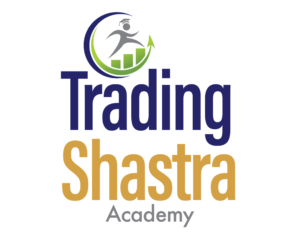- Sector -2, B Block Noida-201301
- info@tradingshastra.com
What is Hedging in Trading & Stock Market

What is Hedging — plain meaning for traders
At the core, hedging transfers risk. If you own an asset and worry about downside, you buy a position that gains when the asset falls. The aim is protection, not profit. That’s why professionals call hedging “insurance” for portfolios. For a broader global definition, you can check Investopedia’s hedging overview.
What is Hedging in Trading & Stock Market (2025) — why it matters now
2025 markets are fast, interconnected, and often driven by macro news. Hedging matters because sudden moves—geopolitics, rate changes, or liquidity shifts—can wipe out short-term gains. Hedging lets traders and investors pause downside risk without exiting core positions.
Types of hedging in the stock market — quick overview
| Type | How it works | When to use |
|---|---|---|
| Options hedging | Buy puts or sell calls to protect long holdings | Protect portfolio in volatile markets |
| Futures hedging | Short futures while holding cash stocks | Protect overall index exposure |
| Cross-asset hedging | Use correlated assets (gold, bonds) as hedge | Macro risk or currency exposure |
| Pairs / statistical hedging | Go long one stock, short a correlated peer | Relative value trades, quant setups |
Options hedging explained
Options give asymmetric protection: buy a put option to set a floor on losses. If your portfolio falls, the put increases in value and offsets part of the loss. The trade-off is the premium you pay.
Futures hedging explained
Futures let you hedge by taking the opposite directional position. If you hold a basket of stocks worth ₹10 lakh, you can sell index futures to protect against a market drop. Futures have margin and carry costs but are cheaper than options premiums in some cases.
How hedging works — step-by-step process
- Identify your exposure and how much you want to protect (e.g., full portfolio, single stock).
- Choose the instrument: put options, futures, or a correlated asset.
- Size the hedge based on exposure and risk tolerance (partial vs full hedge).
- Execute the hedge and document entry prices and costs.
- Monitor and adjust — hedge decay and costs matter over time.
You hold ₹10 lakh in large-cap equities. To protect against a 5% drop, you buy sufficient Nifty put options costing ₹8,000 in premium. If the market drops 5%, option gains offset most of your portfolio loss; if the market rises, your portfolio gains but you lose the ₹8,000 premium.
Common instruments and when to pick each
- Options: Best for asymmetric protection when you accept a known premium.
- Futures: Useful for index-level hedges and when premium cost is a concern.
- ETFs / inverse ETFs: Quick retail hedge with limited setup.
- Cross-asset: Use when correlation helps (e.g., gold vs equities in risk-off).
Costs involved in hedging — what to factor in
Hedging demands cost awareness: option premium, futures carry cost, transaction charges, taxes, and opportunity cost (you may miss upside). Always calculate net expected outcome across scenarios before applying a hedge.
How often to rebalance a hedge
Hedge maintenance depends on time horizon and instrument. Options decay (theta) so they often need frequent rebalancing. Futures hedge can be rolled monthly. The key is a documented rule: when the hedge coverage drops below X% or cost becomes excessive, adjust.
Common hedging mistakes — what to avoid
- Over-hedging: Protecting too much reduces upside and becomes costly.
- Wrong instrument selection: Using options with wrong strike or expiry that don’t correlate with exposure.
- Ignoring costs: Premium, margin and taxes can make hedges uneconomical if ignored.
- No exit plan: Hedging without predefined exit rules creates confusion and trapped positions.
Hedging strategies for different trader types
Beginner traders
Use simple put buys or small futures shorts. Keep hedge size small (25–50% coverage) and practice paper-trading before live hedges.
Active traders
Use rolling options, delta-hedging for options positions, or structured spreads (put spreads) to manage cost and downside.
Long-term investors
Use periodic hedges during high-volatility windows (e.g., quarterly) or use portfolio-level futures hedges for large exposures.
How to learn hedging practically in India — step-by-step learning path
- Understand the theory: spot vs derivatives relationship and how options pricing works.
- Paper-trade hedges for several market scenarios — measure net P&L after costs.
- Practice small supervised hedges with capital-backed programs to learn execution and psychology.
- Document results and refine sizing and instruments.
Why learn hedging at Trading Shastra — practical advantages
Trading Shastra teaches hedging as a functional skill — not a theory module. In our advanced programs you learn:
- How to size hedges using real portfolio exposures.
- Options structures (protective puts, collars, spreads) with live examples.
- Futures hedging for index and single-stock exposure.
- Staged capital allocation and supervised desk time for eligible students.
Programs you can check: Supreme Trader Program A and Ultra Supreme Trader Program.
Ramesh holds a single mid-cap stock worth ₹4 lakh but fears a short-term correction. Instead of selling, he buys a put option for ₹6,000 that covers most of his downside for one month. If the stock falls 10%, the put offsets most of the loss; if it rises, Ramesh loses the ₹6,000 premium but keeps upside.
Hedging vs Speculation vs Arbitrage — quick comparison
| Aspect | Hedging | Speculation | Arbitrage |
|---|---|---|---|
| Objective | Protect capital | Gain from direction | Exploit price differences |
| Risk | Lower | Higher | Low–medium |
| Typical instruments | Options, futures, ETFs | Options, leveraged futures | Cash/futures, inter-exchange |
Checklist — before you put on a hedge
- Identify the specific risk you want to protect (stock, sector, currency).
- Quantify maximum acceptable loss and how much protection you need.
- Choose the instrument and expiry that match your risk horizon.
- Calculate full costs and breakeven points.
- Document entry, target, and exit rules.
FAQs — What is Hedging in Trading & Stock Market
What is hedging in trading?
Hedging in trading is taking an offsetting position (like buying puts or selling futures) to reduce the risk of an existing trade or portfolio. It aims to limit downside while keeping upside potential intact where possible.
What is hedging in the stock market?
In the stock market, hedging typically means using derivatives—options or futures—to protect stock holdings from price declines. Retail investors may also hedge with ETFs or by diversifying across asset classes.
Is hedging the same as insurance?
Conceptually yes: hedging is like insurance where you pay a premium (option cost or opportunity cost) to limit downside risk. The difference: insurance often replaces loss, while hedging offsets financial loss through market positions.
How much does hedging cost?
Costs include option premiums, futures carry, brokerage, taxes and potential opportunity cost. The exact amount depends on instrument, strike, expiry and market conditions.
Can beginners use hedging effectively?
Yes — with structured learning. Beginners should start with paper-trades, practice small hedges under supervision, and use capital-backed training before using significant live funds.
Ready to learn practical hedging? If you want hands-on hedging training with staged capital, supervised desk time, and verified certifications, check Trading Shastra’s advanced programs and book an admissions consultation to see which hedge strategy fits your portfolio.
Trading Shastra Academy
B-11, Sector 2, Noida – 201301
Website: tradingshastra.com | Email: info@tradingshastra.com | Phone: +91 9717333901
Disclaimer: This content explains hedging for educational purposes. Hedging strategies involve costs and market risks. Practice under supervision before using live capital.

